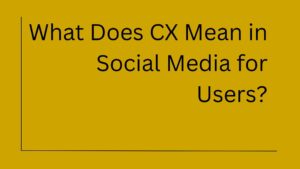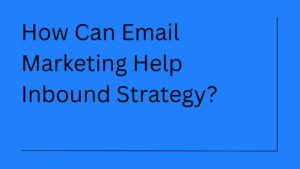Content marketing isn’t just about pushing out blog posts or making clever videos. At its best, it tells stories. It connects. It shifts perception, builds loyalty, and sometimes, goes viral in ways even the creators didn’t fully expect. While there are countless campaigns out there, a few stand out. Not just for their creativity, but for how they made people feel something. That’s where the magic is.
Here are five content marketing examples that didn’t just succeed, they inspired millions. And maybe, just maybe, they’ll spark something in you too.
Five Content Marketing Examples You Can Learn From
1. Red Bull – Stratos: The Edge of Space
Let’s start big. Literally, space-level big.
In 2012, Red Bull funded something that honestly sounds like a plot point in a sci-fi movie: they sent skydiver Felix Baumgartner 24 miles above Earth in a helium balloon… and had him jump. It was called the “Stratos” project, and it became one of the most-watched live events in internet history. At its peak? Over 8 million people were glued to YouTube.
Here’s the thing. Red Bull isn’t really an energy drink company. Not at its core. It’s a media company that sells energy drinks. That’s the key. They consistently invest in high-adrenaline sports, adventure, and larger-than-life stunts that scream excitement and edge. Stratos wasn’t about promoting the product directly, it was about embodying the feeling of Red Bull.
And guess what? It worked. The brand saw a major spike in sales and visibility after the jump. But more importantly, people talked about it. A lot. Even now, years later, it still comes up in conversations about bold, unforgettable marketing.
Why It Worked:
Red Bull didn’t try to sell its drink in this campaign. Instead, they sold a feeling, limitless energy, human potential, and pushing boundaries. That’s what their brand is all about. It wasn’t content marketing in the traditional sense. It was an event, a spectacle. It was so wild that it felt impossible not to talk about it.
Why it inspired:
It reminded marketers everywhere that doing something worth talking about often beats saying something clever.
Key Takeaway:
Daring storytelling beats product pitching. If your brand stands for something bigger than your product, adventure, creativity, boldness, lean into that. Tell that story.
2. Dove – Real Beauty Sketches
Dove took a different route. No skydiving, no adrenaline. Just a quiet, deeply emotional experiment.
In their now-iconic 2013 campaign, “Real Beauty Sketches,” Dove hired a forensic artist to draw women based on their own descriptions of themselves, and then again based on how strangers described them. The contrast between the two sketches was striking. Women saw themselves as less attractive, more flawed. Strangers, on the other hand, often saw beauty they didn’t recognize in themselves.
The message? “You are more beautiful than you think.”
It struck a chord. Not just with women, but with anyone who’s ever been harsh on themselves (so, you know, basically all of us). The video went viral, racking up over 50 million views in its first month. But beyond the numbers, it built emotional equity. It made people feel seen.
Why It Worked:
This hit deep. It addressed insecurities, but gently. Dove positioned itself not just as a skincare brand, but as a champion of self-esteem and real beauty. The video went viral fast because people felt moved, seen, and understood. It was raw. Emotional. And refreshingly honest in a world obsessed with perfection.
Why it inspired:
It showed that content marketing could be powerful without being pushy. It tapped into vulnerability, and people responded with raw emotion and brand loyalty.
Key Takeaway:
Content that reflects real human emotion resonates. Especially when it highlights something we don’t usually talk about openly. Vulnerability is often more powerful than hype.
3. GoPro – User-Generated Stories That Feel Like Blockbusters
GoPro could have gone the typical route. Glossy ads, professional shoots, maybe a celebrity endorsement. But they leaned into something more organic and much smarter.
They let their customers do the talking. Or, more accurately, the filming.
GoPro built a content engine based on user-generated content (UGC). Adventurers, travelers, surfers, skydivers, even firefighters, people across the globe used their GoPros to capture real, raw, sometimes breathtaking footage. And GoPro turned the best of it into curated, high-quality video content. Some of it looked like it belonged on the big screen.
This wasn’t just clever marketing, it was cost-effective, authentic, and addictive to watch. From snowboarding montages to life-saving moments caught on camera, GoPro became the tool that empowered people to tell their own stories.
It’s not always easy to trust brands. But it’s easier to trust people who use those brands.
Why It Worked:
It felt real. Viewers didn’t see actors or staged moments; they saw real people doing real (and often unbelievable) things. And by spotlighting users, GoPro created a massive community of storytellers who felt personally invested in the brand.
Why it inspired:
It proved that sometimes the best content isn’t what a brand creates, it’s what its community creates. GoPro just amplified it.
Key Takeaway:
Sometimes your customers are your best marketers. Encourage them to create content. Showcase it. Amplify their voices, and in return, they’ll amplify your brand.
4. HubSpot – Educational Content That Doesn’t Feel Like Homework
Now, not every inspiring campaign needs to be flashy. Some earn loyalty simply by being… helpful. Enter HubSpot.
HubSpot, a B2B software company, built its brand by giving away a ton of free value. Their blog, eBooks, email courses, and templates are all designed to teach people how to do inbound marketing better. And it’s not just surface-level tips. We’re talking deep, actionable stuff. The kind you might expect to pay for.
But they gave it away. Generously. Consistently. And over time? They built a reputation as the go-to resource for marketers.
Here’s what’s kind of brilliant about it: HubSpot’s content is so useful that even people who aren’t customers feel grateful to them. That kind of goodwill is rare and powerful. When do those people eventually need software to support their business? Guess who they remember.
Why It Worked:
They didn’t just create content; they became the resource for inbound marketing knowledge. Whether someone used their software or not, they still relied on HubSpot to learn. That kind of value breeds trust. And when those readers eventually needed CRM or automation tools? HubSpot was the obvious choice.
Why it inspired:
It reminded everyone that “content marketing” can just mean showing up for your audience. Teaching them. Helping them. Earning trust over time, not demanding it upfront.
Key Takeaway:
Educational content works best when it’s generous and genuinely useful. Don’t just scratch the surface. Dig in. Teach well, and the loyalty will follow.
5. Spotify – Wrapped: Personal Data Turned Into Playful Stories
Every December, Spotify turns something deeply personal, your listening habits, into something shareable, quirky, and weirdly insightful.
Spotify Wrapped isn’t just a summary of what you listened to. It’s a celebration. It’s a conversation starter. It’s a “look what I listened to more than anything else this year” humblebrag. Or sometimes an accidental confession.
Wrapped works because it’s personal. You feel seen. Whether you’re slightly embarrassed that Taylor Swift dominated your playlists or oddly proud that you listened to 100,000 minutes of lo-fi hip-hop, it creates a moment of connection between you and the brand.
And here’s the genius part: everyone shares it. Not because they’re told to, but because they want to. It’s marketing disguised as a social flex.
Plus, Spotify adds clever commentary, genre trends, and cultural nods that make it fun even if you’re just browsing other people’s Wrapped posts.
Why It Worked:
It makes people the star. Wrapped is hyper-personal and fun, but it’s also subtly brilliant marketing. Users willingly share these stories across social media, tagging artists and sparking conversations. All while Spotify gets free promotion and positions itself as part of their users’ identity and lifestyle.
Why it inspired:
It showed that data doesn’t have to be dry. With the right twist, even cold numbers can feel warm, funny, and totally human.
Key Takeaway:
Data doesn’t have to be dry. If you have interesting user behavior insights, find ways to turn them into engaging stories. Make your users feel seen, and they’ll return the favor by spreading the word.
So, What Do These Content Marketing Campaign Examples Have in Common?
Although the formats and styles vary wildly, from skydives to blog posts, they all nail a few key things:
1. They Tap Into Emotion
Whether it’s awe, joy, pride, or reflection, these campaigns make people feel. Emotional storytelling is a shortcut to memory. It sticks. People remember how you made them feel long after they forget what you said.
2. They Add Real Value
This isn’t just content for content’s sake. Each campaign gave something: entertainment, insight, community, and inspiration. That value created loyalty.
3. They’re Authentic
These weren’t gimmicky, overly polished ads. They felt human. Flawed, even. And that’s what made them relatable. People trust what feels real.
4. They Involve the Audience
From GoPro’s user footage to Spotify’s personalized summaries, these campaigns didn’t just speak to audiences, they spoke with them. They invited participation.
What Can You Learn From These Content Marketing Campaigns?
You don’t need a multimillion-dollar budget or a viral formula to create great content. You just need a clear understanding of your audience and a willingness to connect with them on a deeper level.
Ask yourself:
- What does your brand really stand for?
- What emotion can you tap into?
- Can you tell a story that people care about, even if it doesn’t mention your product?
- Can you show instead of tell?
If you’re unsure where to start, try this: forget the product for a moment. Focus on the human behind the screen. What would they actually enjoy, learn from, or be moved by? Start there.
Final Thoughts
There’s a reason these content marketing examples still get talked about. They didn’t just aim for clicks; they aimed for connection. And they weren’t afraid to try something a little offbeat, a little vulnerable, or a little… enormous (seriously, Red Bull? Space?).
Here’s what they have in common:
- Emotion. They made people feel something. Whether it was awe, joy, reflection, or pride, emotion anchored every campaign.
- Authenticity. None of these felt like ads, at least not in the traditional sense. They felt like stories. Real ones.
- Shareability. People wanted to talk about them. And in the world of content marketing, that’s the holy grail.
- Value-first mindset. Whether it was entertainment (Red Bull), education (HubSpot), or self-expression (Spotify), they gave first, before asking for anything in return.
That’s the sweet spot. That’s what keeps people coming back. And maybe, if you’re planning a content campaign of your own, it’s worth asking:
What would someone actually want to watch, read, share, or remember?
Start there. The rest tends to follow.






2 thoughts on “5 Best Content Marketing Examples That Inspired Millions”
Strategic content making is about understanding the fundamentals of how content marketing works, isn’t it? Seeing platforms like many CMSs available focus on help in building proper content funnels or anything following them. Relevant content is a smart approach to long-term success. It’s more than just luck!
I haven’t known such number of content marketing ideas would exists, this article is so well-written and insightful. Thank you for sharing!